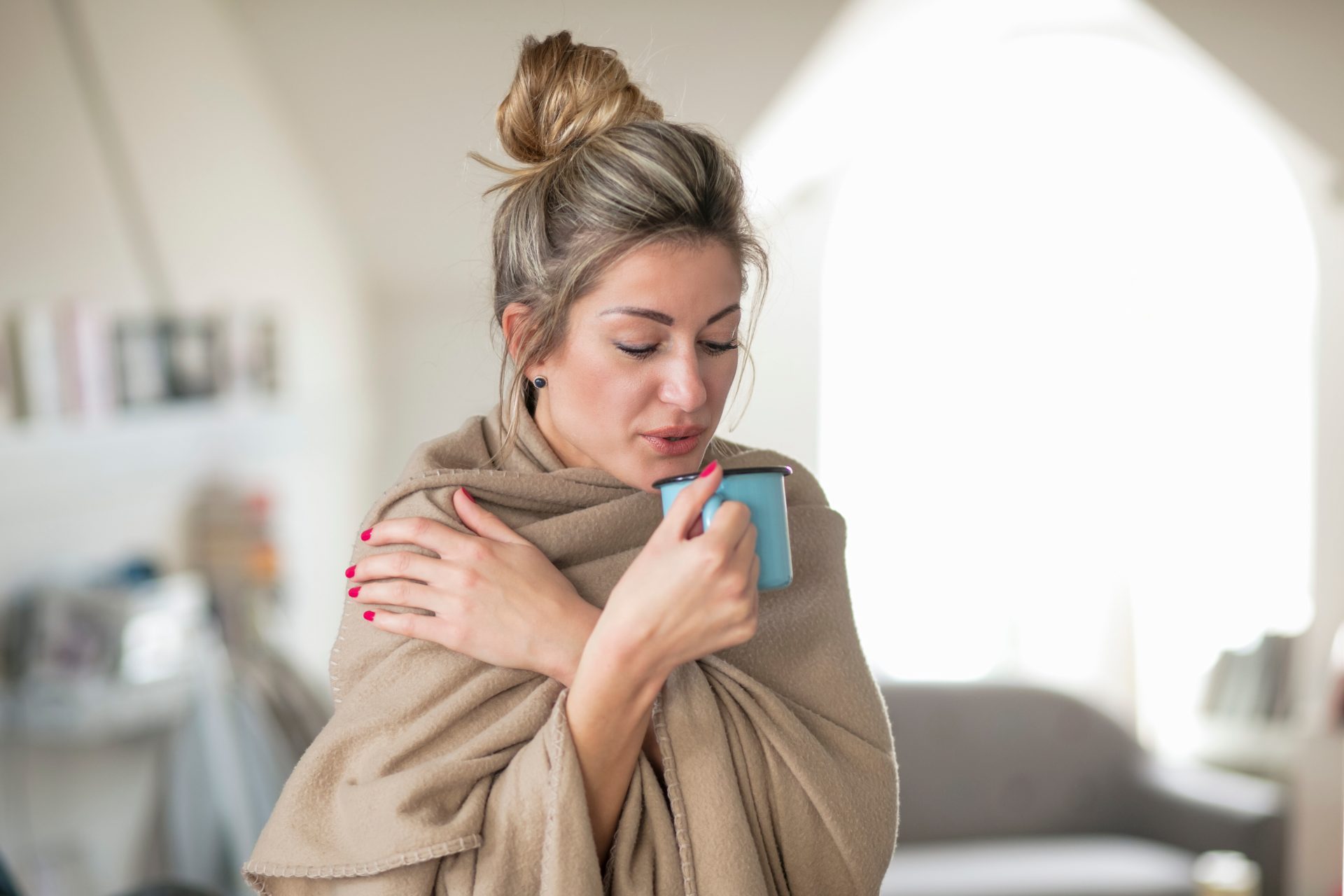Feel freezing cold all the time? Can’t seem to warm up? We explain why some of us feel colder than others, even when the heating is on full blast.
With so many of us working from home, deciding when to turn on the central heating is a now a crucial part of the day. You get to 10am and you start to wonder why you’re still freezing… and if it’s too early to switch the dial on.
I’m freezing pretty much all the time, winter or not. I can’t feel my fingers in spring and I still need a jacket during July’s heatwave evenings. I won’t even begin to tell you how many layers I wear when I go skiing. Yet, my housemate can walk down the street in shorts in December, and others sweat the second they put a coat on.
So why do some people just seem to feel the cold more than others – and what does it mean?
You may also like
Running in winter: train like Anthony Joshua and embrace running in the cold
Finding out what is ‘normal’ when it comes to our temperature is pretty tricky though, explains Dr Clare Eglin from the Extreme Environments Laboratory in the Health and Exercise Science department at the University of Portsmouth. While our core temperature should ideally not change, “our perception of whether we find somewhere warm or cool is very individual and usually down to our skin temperature,” Dr Eglin says. “This is what gives our body feedback, and lots of things can affect that from the clothes that we are wearing to the activities we are doing – and also the wind and dampness of the environment.”
However, there are genetic and personal factors that can mean that two people, wearing the same thing, in the same environment feel different temperatures.
Why do some people feel colder than others?
Everyone’s body has a slightly different reaction to cold and some people feel cold more often than others, which is known as cold intolerance.
There are many factors that contribute to this, including:
- Overall body size can impact how cold you feel, as smaller people have less cells in their body that produce heat
- People with higher levels of body fat and/or muscle mass have more insulation and a higher resting metabolic rate so burn energy faster
- Being active not only warms the body immediately but can have a long-term effect on temperature regulation
- Older people also tend to have a slower resting metabolic rate, so may feel the cold more
These factors do mean that gender is a big divider, as women are generally smaller than men and carry less muscle mass. We’ve all fought over the thermostat in the office (or central heating while at home) but the fact is that “the temperature deemed comfortable for most people is meant to be about 21 degrees. Actually, that’s ideal for a man in a suit, but women generally do better with a higher temperature,” says Dr Eglin.

Interestingly, we feel this disparity internally too. “Estrogen and progesterone, which change throughout the menstrual cycle, affect how quickly our blood vessels constrict to the cold. So depending what part of the menstrual cycle you’re in, you might find your hands and feet get colder, affecting your overall temperature perception,” says Dr Eglin.
Plus, your temperature perception can change throughout the day. “For instance, at six o’clock in the morning your core temperature is at its lowest, and from midday to mid-afternoon, it’s at its highest,” she adds.
You may also like
How to get a good night’s sleep in fluctuating weather and temperatures
Why do my hands feel cold?
Don’t panic if, like me, you have hands like ice cubes on a summer’s day. “It is a very typical thing, particularly for women, as our hands are really good for regulation,” says Dr Eglin. Our hands have a large surface area but a small volume and are filled with lots of blood vessels very close to the surface of the skin. “They’re very good for losing heat and so therefore, when you’re slightly cool, the blood flow shuts down,” she says.
While “peripheral temperature is generally nothing to worry about”, it can be a sign of Raynaud’s syndrome, an extreme response to cold or stress where arteries narrow to the point that fingers and toes turn white or blue and feel cold and numb – but circulation returns to normal when warm again.
You may also like
Winter workouts: 9 tips to help motivate yourself to exercise when it’s cold
Is it bad to be cold all the time?
Generally, being cold is simply down to our body type, and as long as we take precautions it’s not a bad thing. But if constant coldness is mixed with other symptoms it could be a sign of something more serious. For example, coldness paired with tiredness or dizziness could be a symptom of an iron or B12 deficiency, or even anaemia. Constantly being cold coupled with hair loss, a change in your digestive system and weight gain could also be a sign of a low thyroid – when the gland stops producing enough thyroxine (a hormone which regulates your metabolism).
Ultimately, your body is pretty good at regulating itself, so trust what it’s telling you. “Our behaviour is the most important thing when it comes to keeping warm. I think quite often we underestimate the weather in the UK. You always hear people say ‘It’s not that bad, it’s not like we’re in the Arctic!’, but with the windchill and dampness it can be very cold. We don’t pay enough attention to that,” says Dr Eglin. So, bundle up when you’re feeling the chill.
Follow @StrongWomenUK on Instagram for the latest workouts, delicious recipes and motivation from your favourite fitness experts.
Source: Read Full Article
